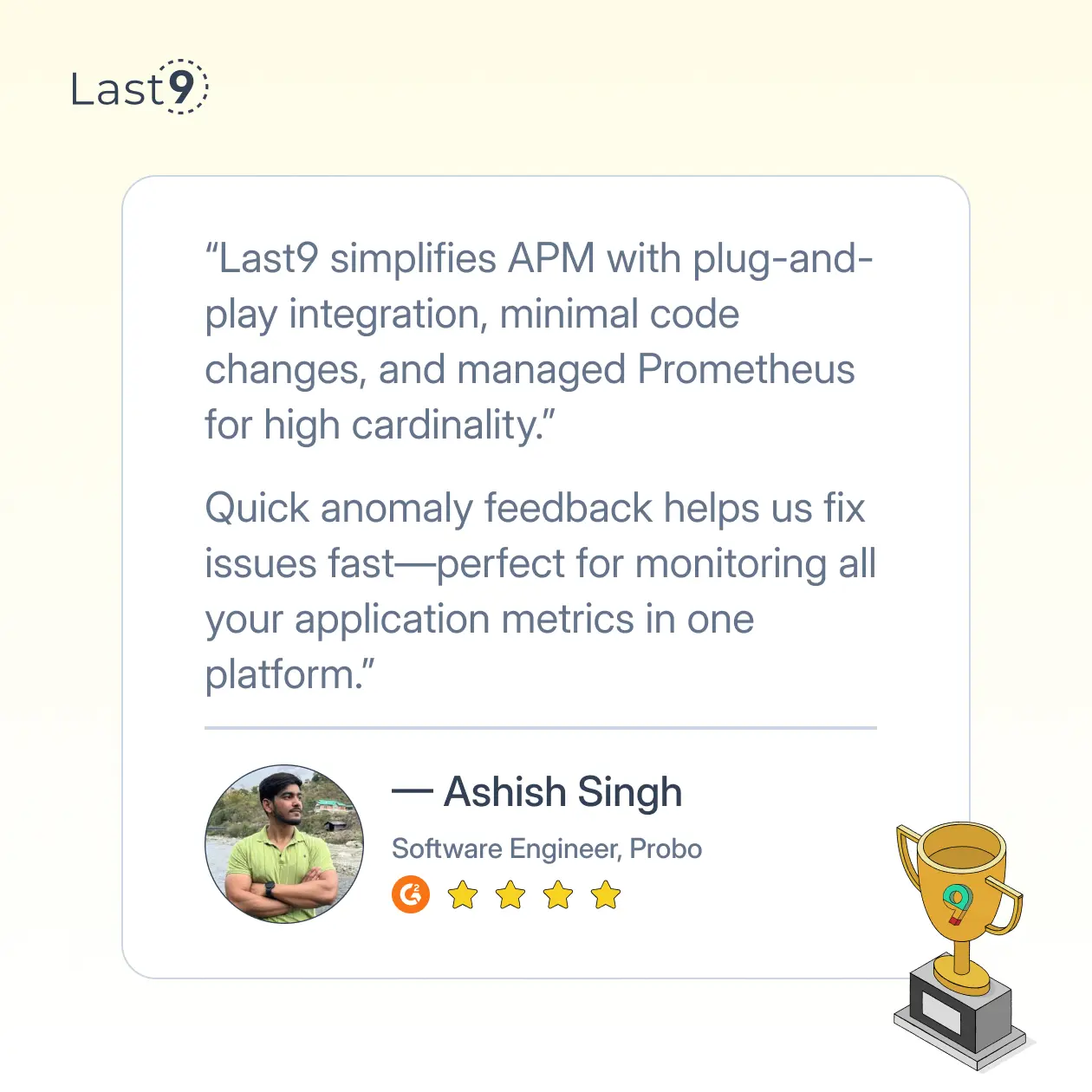MongoDB is a powerful and flexible NoSQL database, widely used for modern applications that require high performance and scalability. However, like any database system, it requires proper monitoring to maintain optimal performance, ensure high availability, and keep security risks at bay.
Without consistent monitoring, you may encounter slow queries, excessive memory consumption, or even unexpected downtime—all of which can severely impact your application's stability and user experience.
This guide provides an in-depth look at MongoDB monitoring, covering key metrics, essential tools, and best practices.
Why MongoDB Monitoring Matters
Without proper monitoring, issues such as slow queries, resource exhaustion, and security breaches can go unnoticed, potentially leading to downtime or data loss.
Here’s why MongoDB monitoring is essential:
1. Ensuring Optimal Performance
MongoDB’s performance depends on factors like query efficiency, indexing, and resource utilization. Monitoring helps:
- Detect slow queries and optimize them for faster response times.
- Identify inefficient indexing that leads to high CPU and memory usage.
- Track disk I/O and memory consumption to prevent bottlenecks.
2. Maximizing Availability & Uptime
Downtime can lead to lost revenue and poor user experience. Monitoring ensures:
- Replica sets and sharded clusters are operating correctly.
- Any failures or anomalies are detected before they cause downtime.
- Latency issues are addressed before impacting end users.
3. Proactive Capacity Planning
Running out of storage, CPU, or memory can lead to crashes or degraded performance. Monitoring helps:
- Predict when additional resources are needed before reaching critical limits.
- Avoid unexpected resource shortages by planning for growth.
- Optimize resource allocation to improve cost efficiency.
4. Strengthening Security & Compliance
Unauthorized access or malicious activities can compromise your data. Monitoring allows you to:
- Detect suspicious login attempts and unauthorized access.
- Track database activity to prevent data breaches.
- Ensure compliance with security policies and regulatory requirements.
5. Improving Troubleshooting & Issue Resolution
When problems arise, having access to real-time and historical monitoring data helps:
- Quickly identify and resolve issues before they escalate.
- Understand the root cause of performance slowdowns or failures.
- Reduce downtime by responding to alerts and anomalies promptly.
Key Metrics to Monitor in MongoDB
To ensure a healthy MongoDB instance, you need to track specific metrics that provide insights into database performance, resource utilization, and overall health.
1. Query Performance
Slow Queries (slowms)
MongoDB allows you to set a threshold (slowms) to identify slow queries. Any query exceeding this threshold should be analyzed to determine if indexing or query optimization is needed.
Query Execution Time
Measuring the execution time of queries can help pinpoint performance bottlenecks and optimize database operations.
Read & Write Operations
A high latency in read and write operations may indicate indexing inefficiencies, disk I/O issues, or an overloaded database server.
2. Resource Utilization
CPU Usage
If your MongoDB instance is consuming excessive CPU, it could be due to inefficient queries, a high number of concurrent connections, or inadequate hardware resources.
Memory Usage
MongoDB relies heavily on RAM to cache frequently accessed data. If memory consumption is too high, it may start swapping, significantly impacting performance.
Disk I/O
Excessive disk reads and writes can indicate that indexes are not being utilized effectively or that your dataset exceeds available memory.
3. Connections & Throughput
Active Connections
Monitoring the number of active connections helps determine whether connection pooling needs adjustment or if the database is experiencing a sudden spike in traffic.
Operation Counters (OpCounters)
Tracking the number of insert, update, delete, and query operations gives insights into database workload and potential performance bottlenecks.
4. Replication & Cluster Health
Replication Lag
In a replica set, replication lag refers to the time delay between the primary and secondary nodes. If the lag becomes too large, secondary nodes may serve outdated data.
Oplog Size & Window
The oplog (operations log) size determines how long changes are retained for replication. If the oplog window is too small, a replica set member might fall too far behind and require a full resync.
5. Errors & Logs
Assertion Failures
Frequent assertion failures in logs can indicate severe issues with MongoDB, such as corruption or misconfiguration.
Locking Issues
If write locks are consistently high, MongoDB might be experiencing contention issues, requiring query optimization or additional resources.
5 Popular Tools for MongoDB Monitoring
Various tools are available to help monitor MongoDB effectively. Here are some of the best options:
1. MongoDB Atlas Monitoring
Overview:
MongoDB Atlas, the fully managed cloud database service by MongoDB, includes a built-in monitoring dashboard. It provides real-time and historical insights into database performance, resource usage, slow queries, and replication health.
Pros:
- Native integration with MongoDB Atlas, requiring no additional setup
- Intuitive UI with real-time metrics, charts, and logs
- Automated performance alerts and optimization recommendations
- Security and compliance features for access monitoring
Cons:
- Limited to MongoDB Atlas; not available for self-hosted MongoDB deployments
- Some advanced features require higher-tier subscriptions
Best For:
- Organizations using MongoDB Atlas that want a seamless, built-in monitoring solution
- Teams that prefer an easy-to-use dashboard with automated alerts
2. mongostat & mongotop
Overview:
These are command-line tools included with MongoDB for monitoring:
- mongostat: Provides real-time statistics on database operations like inserts, queries, updates, and deletes
- mongotop: Tracks the percentage of time MongoDB spends reading and writing data
Pros:
- Lightweight and built into MongoDB, requiring no extra installation
- Provides real-time insights for quick troubleshooting
- Useful for debugging performance issues on self-hosted MongoDB instances
Cons:
- No historical data or advanced visualization
- Requires manual analysis of output data
- Lacks alerting or integration with other monitoring tools
Best For:
- Developers and database administrators who need quick, real-time performance insights
- Small-scale or self-hosted MongoDB deployments without complex monitoring needs
3. Last9
Overview:
Last9 is a modern observability platform designed for monitoring distributed systems, including MongoDB. It helps teams detect performance bottlenecks, optimize database queries, and improve efficiency.
Pros:
- User-friendly dashboard with powerful analytics
- Automated detection of performance issues and anomalies
- Scalable and designed for high-volume data monitoring
- Supports integrations with cloud-native and on-prem databases
Cons:
- Relatively newer compared to other established monitoring solutions
- Pricing may not be suitable for small teams or startups
Best For:
- Teams looking for a modern observability platform with AI-driven insights
- Large-scale applications that require deep database performance analysis
4. Prometheus & Grafana
Overview:
Prometheus is an open-source monitoring and alerting system that collects time-series data, while Grafana provides visualizations and dashboards for analyzing the data. Together, they offer a powerful, customizable monitoring solution for MongoDB.
Pros:
- Open-source and highly flexible
- Customizable dashboards with in-depth metrics
- Supports alerting based on predefined thresholds
- Works for both self-hosted and cloud-based MongoDB deployments
Cons:
- Requires manual setup and configuration
- Can have a learning curve for beginners
- Storage and retention of historical data require extra planning
Best For:
- DevOps teams that want a customizable and scalable monitoring solution
- Enterprises looking for an open-source alternative to paid monitoring tools
5. Datadog
Overview:
Datadog is a cloud-based monitoring and analytics platform that integrates with MongoDB to provide real-time insights into performance, resource usage, and security threats.
Pros:
- Easy integration with MongoDB and other cloud services
- Intuitive UI with real-time dashboards and automated alerts
- Advanced anomaly detection powered by AI/ML
- Supports distributed tracing and full-stack observability
Cons:
- Subscription-based; costs can add up for larger deployments
- Some advanced monitoring features require premium tiers
Best For:
- Enterprises that need a comprehensive observability platform with real-time alerts
- Organizations with hybrid cloud and on-prem MongoDB deployments
Best Practices for MongoDB Monitoring
Effective monitoring requires more than just collecting data—it involves proactive management and optimization. Here are some best practices to follow:
1. Set Up Alerts
Configure alerts for high CPU usage, slow queries, replication lag, and other critical events. This ensures you can take action before issues escalate.
2. Optimize Queries & Indexes
Regularly analyze query performance and create proper indexes to reduce database load and improve response times.
3. Monitor Replica Sets
Keep a close eye on replication lag and oplog window size to ensure data consistency across your cluster.
4. Automate Backups
Schedule automated backups to prevent data loss in case of hardware failures, accidental deletions, or cyberattacks.
5. Scale When Needed
If your database consistently reaches performance limits, consider scaling vertically (adding more resources) or horizontally (sharding data across multiple servers).

Final Thoughts
MongoDB monitoring is not just about tracking metrics—it’s about ensuring the reliability, performance, and security of your database.
To start improving your MongoDB monitoring today, set up alerts, optimize your queries, and choose a monitoring tool that fits your needs.



